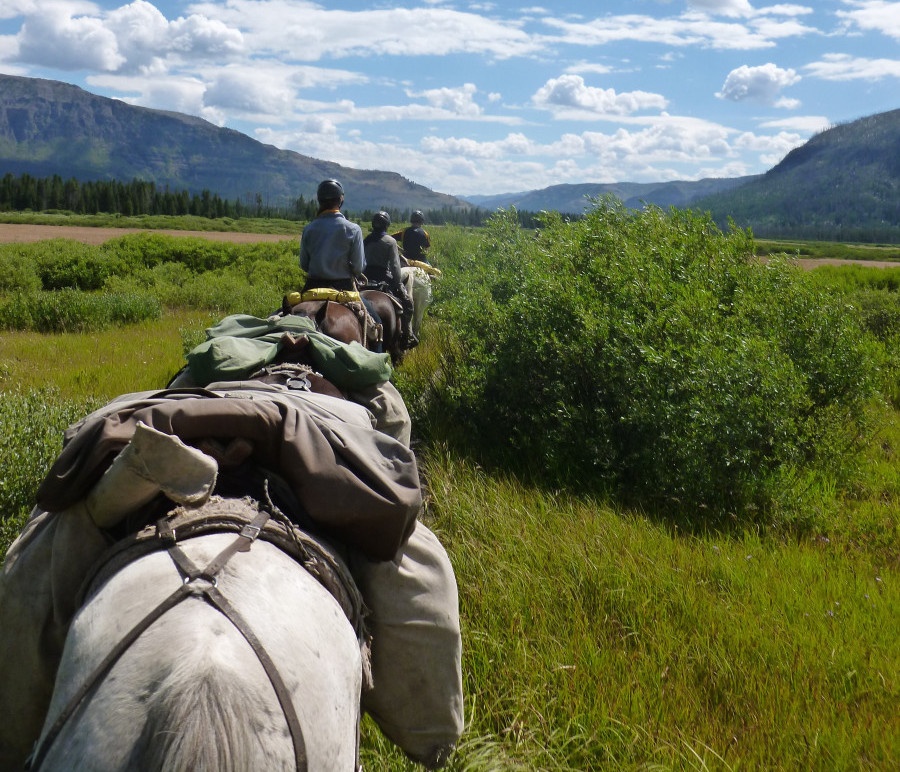
You look around and decide you can avoid the snow and descend to Nate without kicking rocks onto him. Nate has rolled away from the tree onto a flat pine needle covered bench. You and Mary arrive at his side, drop your packs and wait for the other to do something. This void needs a leader. You step in, trying to recollect what you learned in last year's Wilderness First Aid (WFA) course. You remember the patient assessment system triangle on your water bottle. Taking a look at this helps you to focus and enter the Patient Assessment System.
SOAP Report
Subjective
The patient is a 42-year-old male who slid and tumbled about 20 yards down a snow slope and hit a tree head first. He says his left hip and elbow and shoulder hurt, but he thinks he's okay. The patient is currently awake and oriented.
Objective
Patient Exam
The patient rolled over once after he landed. We found him on his right side with no bleeding and no obvious injuries. We removed his pack and protected his head and back. He does not think he lost consciousness, but he seemed stunned when we arrived at his side. Currently he is awake and his level of consciousness seems normal.
The head-to-toe revealed pain to his left hip, elbow, and shoulder but there were no obvious injuries, and he can move those limbs. The pain is a 4-5 on the 0-10 scale. There is no pain in his back or neck, and he can move his legs and arms. He denies any tingling or odd sensations and can feel when fingers and toes are touched.
Vital Signs
|
Time |
1300 hours |
|
Level of Responsiveness (LOR) |
Awake and oriented |
|
Heart Rate (HR) |
90, strong |
|
Respiratory Rate (RR) |
20, easy |
|
Skin Color, Temperature, Moisture (SCTM) |
pale, warm, dry |
History
|
Symptoms: |
None. |
|
Allergies: |
Lots of hay fever allergies, not a problem at this time |
|
Medications: |
Claritin® for his allergies; Ibuprofen as needed but not today; something for cholesterol taken daily. |
|
Pertinent Hx: |
None. |
|
Last in/out: |
2 liters on the trail today; not thirsty; urinated 30 minutes ago; ate breakfast and an energy bar. |
|
Events: |
We have been hiking for 4 hours; Nate was not dizzy, he just slipped. |
Pause here!
What is your assessment and plan? Take a few minutes to figure out your own assessment and make a plan before you read further.

Assessment
- Mechanism for spinal injury.
- Minor injury (no obvious fracture or dislocation) to hip, elbow and shoulder.
Plan
- Roll Nate onto a pad; keep warm.
- Keep spine protected.
- Monitor and access help.
Anticipated problems
- Shock.
- Weather change (we don't have a lot of gear).
Comments
These folks are Wilderness First Aid (WFA) trained. They checked for life threats, identified obvious injuries, obtained a basic set of vital signs and medical history, and stabilized the patient while accessing assistance. The patient is in good hands.
Scope of Practice (SOP) refers to the unique role, set of skills, and knowledge base for a provider. In other words, what someone with a certain level of training should know and be able to do. Over the past decade a group of wilderness medicine schools, the Wilderness Medicine Education Collaborative, has developed a consensus on guidelines for Wilderness First Aid (WFA), Wilderness Advanced First Aid (WAFA) and Wilderness First Responder (WFR) training. The intent of these documents is to provide guidance on appropriate content for these courses and a forum for discussion.
The focused spine assessment, the WAFA and WFR tool for making a decision on spine management in the scenario of a spine injury mechanism without signs or symptoms of a spine injury, is not in the Scope of Practice of a WFA trained in a 16 hour course. It takes additional training to be competent in this critical skill.
The Tale Continues
You logroll Nate onto a foam pad, cover him with your spare layers and elevate his legs with bent knees a few inches to make his back comfortable. Cell phone reception is good and you are able to activate the Search and Rescue (SAR) unit. You give them coordinates and a good description of your location, which is only a half a kilometer from the trailhead. You deliver your SOAP report and ask for a provider who can make a spine assessment.
At 1330 hours you repeat the Patient Assessment and update the written SOAP report.
Patient Exam
The patient is comfortable on a pad on his back. He has no spine pain and can move and feel his hands and feet. He complains of soreness on his left hip, left elbow, and shoulder. There is now bruising in all three places. The patient can move all these joints and there is no sign of fracture or dislocation. Currently he is awake and his level of responsiveness seems normal. He wants to get up and walk to the car.
|
Time |
1300 hours |
1330 hours |
|
Level of Responsiveness (LOR) |
Awake and oriented |
Awake and oriented |
|
Heart Rate (HR) |
90, strong |
84, strong |
|
Respiratory Rate (RR) |
20, easy |
20, easy |
|
Skin Color, Temperature, Moisture (SCTM) |
pale, warm, dry |
pink, warm, dry |
Comments
If you are with the patient for an extended time, it's common to reassess the vital signs. Repeating the whole patient assessment, including checking inside splints and under bandages, may reveal signs such as these bruises, which develop over time.
End of the Tale
An hour later a team of three from the local SAR unit arrives on the scene. One is a WEMT, the other two WFRs. They listen to your SOAP report. The WEMT maintains spine protection while conducting a focused spine assessment (FSA) in which they find no signs of a spine injury: Nate is alert, sober and reliable; he has good CSMx4; and denies spine pain. The WEMT and Nate make a decision that Nate can walk. The hike to the trailhead takes an hour. The SAR folks check Nate one more time. He's feeling stiff and sore and looks forward to the hot tub and a massage. As you part ways you thank the SAR folks who in turn complement your competent handling of the situation.
Written By
Gates Richards
Gates Richards has been involved in outdoor education and EMS since the early '90s. Over the years he's worked outdoor programming throughout the Rockies, Pacific Northwest and Alaska. He's worked urban EMS in DC, WA, CO and WY. Gates began teaching for NOLS Wilderness Medicine in 1998 and has been awarded the Wilderness Medical Society's Warren Bowman award for contributions to wilderness medicine by a non-physician as well as the National Collegiate EMS Foundation's Distinguished Service Award. He was the former Associate Director and is currently a NOLS Wilderness Medicine Faculty member.



